
SURGICAL AND RADIOLOGIC ANATOMY
Scope & Guideline
Elevating Surgical Expertise through Rigorous Research
Introduction
Aims and Scopes
- Anatomical Variability and Clinical Implications:
The journal extensively explores anatomical variations, detailing their clinical significance and implications for surgical practices and interventions. - Imaging and Radiological Techniques:
Research employing advanced imaging techniques such as MRI, CT, and ultrasound to visualize anatomical structures and their variations, enhancing diagnostic and surgical accuracy. - Morphometric and Morphological Studies:
Quantitative analyses of anatomical structures to understand their form, size, and relationships, contributing valuable data for surgical planning and educational purposes. - Educational Methods in Anatomy:
Innovative approaches to teaching anatomy, including the use of technology like 3D printing and virtual dissection, aimed at improving educational outcomes for medical students. - Embryological and Developmental Anatomy:
Studies that investigate the embryological development of anatomical structures, providing insights into congenital variations and their clinical implications. - Case Reports and Clinical Studies:
Detailed case reports highlighting unique anatomical findings that contribute to the existing body of knowledge and inform clinical practices.
Trending and Emerging
- Application of AI and Digital Technologies:
Emerging studies exploring the integration of AI tools, such as ChatGPT, in anatomy education and assessment, signaling a trend towards enhancing learning experiences. - 3D Imaging and Reconstruction Techniques:
An increase in the application of 3D modeling and printing technologies to visualize and understand complex anatomical structures, facilitating surgical planning and education. - Interdisciplinary Approaches to Anatomy:
A growing trend towards interdisciplinary research that incorporates insights from fields such as engineering, computer science, and biology to enhance anatomical studies. - Focus on Anatomical Variants in Surgical Contexts:
Research is increasingly centered on understanding anatomical variants and their implications for surgical techniques, improving patient outcomes and safety. - Enhanced Educational Strategies:
A notable rise in studies evaluating the effectiveness of novel educational strategies in anatomy teaching, particularly in response to challenges posed by the COVID-19 pandemic.
Declining or Waning
- Basic Anatomical Textual Studies:
There has been a noticeable decrease in publications focused solely on standard anatomical descriptions without novel findings or clinical relevance. - Histological Studies:
Although histological analysis remains important, the volume of histological studies has waned, possibly due to a shift towards more imaging-based research methodologies. - Generalized Anatomical Reviews:
The trend towards broad reviews that lack specific clinical or surgical implications has decreased, with a preference for more focused, clinically relevant studies. - Traditional Cadaveric Studies:
While cadaveric studies are still relevant, there is a noted decline in purely descriptive studies without innovative methodologies or technological integration.
Similar Journals

FOLIA MORPHOLOGICA
Unveiling the Intricacies of Morphological ScienceFOLIA MORPHOLOGICA is a prominent academic journal dedicated to advancing the fields of anatomy and histology. Published by VIA MEDICA since 1952, this journal serves as a critical platform for the dissemination of high-quality research, offering valuable insights into morphological studies. With an impact factor reflective of its dedication to rigorous scientific evaluation, FOLIA MORPHOLOGICA is recognized within the Q3 category in both anatomy and histology as of 2023, indicating its substantial contribution to these vital areas of medical science. Although currently not an open-access journal, it provides essential access options through various academic databases, ensuring that important findings are reachable by researchers, healthcare professionals, and students globally. The journal's scope encompasses a wide range of topics related to morphological sciences, making it a vital resource for those looking to stay at the forefront of anatomical and histological research. FOLIA MORPHOLOGICA remains dedicated to fostering scholarly communication and innovation, continuously aiming to enhance the scientific understanding of the intricate structures that underpin biological functions.

ZOOMORPHOLOGY
Illuminating the connections between structure and survival.ZOOMORPHOLOGY, published by SPRINGER, stands as a pivotal journal in the fields of Animal Science, Zoology, and Developmental Biology. Since its inception in 1980, this journal has been dedicated to advancing the understanding of animal morphology and the evolutionary adaptations of various species. With an ISSN of 0720-213X and an E-ISSN of 1432-234X, ZOOMORPHOLOGY boasts a Q2 ranking in Animal Science and Zoology and is recognized within the Q4 category in Developmental Biology as of 2023, reflecting its impactful contributions to the scientific community. The journal is indexed in Scopus, where it ranks #224 out of 490 in Animal Science and Zoology, and #66 out of 82 in Developmental Biology, positioning it as a resource of considerable significance for researchers and professionals in these disciplines. Although ZOOMORPHOLOGY currently operates on a traditional access model, it continues to foster scholarly communication and inspire future researchers through rigorous peer-reviewed articles that explore the intricate relationships between form and function in the animal kingdom. With a commitment to excellence and innovation, ZOOMORPHOLOGY remains a vital platform for publishing high-quality research that drives forward our knowledge in morphology and evolutionary biology.
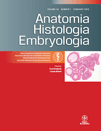
ANATOMIA HISTOLOGIA EMBRYOLOGIA
Unlocking the Secrets of Structure and DevelopmentANATOMIA HISTOLOGIA EMBRYOLOGIA, published by Wiley, is a well-regarded journal that serves as a vital resource in the field of anatomy and histology, with a particular emphasis on embryological studies. Established in 1972, this journal fosters cutting-edge research and discussions that deepen our understanding of the intricate relationships between structure and function across various species, while also addressing the parallels within veterinary and medical contexts. Though currently not open access, the journal maintains a significant impact within its scope, evidenced by its strong performance in Scopus rankings, particularly in the veterinary sciences, where it stands at rank #81 out of 194. With its dedicated focus on progressive scientific inquiry and publication regularly until 2024, the journal is committed to advancing knowledge and providing a platform for scholars, researchers, and practitioners alike. ANATOMIA HISTOLOGIA EMBRYOLOGIA is pivotal for those aiming to engage with the latest findings and methodologies in the fields of medicine and veterinary science, ensuring it remains an essential addition to any academic library.
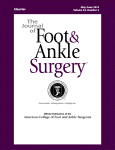
Journal of Foot & Ankle Surgery
Elevating Standards in Foot & Ankle CareThe Journal of Foot & Ankle Surgery, published by Elsevier Science Inc, stands as a pivotal resource in the realm of orthopedic and surgical research. With an ISSN of 1067-2516 and an E-ISSN of 1542-2224, this esteemed journal features a robust impact with a current ranking of Q2 in Orthopedics and Sports Medicine and Q1 in Surgery for 2023, reflecting its significant contribution to these fields. With coverage extending from 1993 to 2024, the journal provides a comprehensive platform for the dissemination of innovative research, clinical findings, and advancements in foot and ankle surgery. Researchers, professionals, and students benefit from its rigorous peer-review process and its presence in the leading databases, as evidenced by its Scopus rankings, including a rank of #226/551 in Medicine-Surgery and #168/321 in Medicine-Orthopedics and Sports Medicine. Join the esteemed community of scholars dedicated to advancing knowledge and practice in foot and ankle surgery through this invaluable publication.
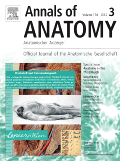
ANNALS OF ANATOMY-ANATOMISCHER ANZEIGER
Illuminating the Path of Anatomical DiscoveryANNALS OF ANATOMY - ANATOMISCHER ANZEIGER is a premier journal published by Elsevier GmbH, focusing on the intricacies of anatomical research and developmental biology. Established in 1992, this journal has continuously contributed to the advancement of knowledge in these fields, boasting an impressive impact factor that positions it within the Q2 quartile for Anatomy and a respectable ranking in Developmental Biology. With a Scopus ranking of #17 in Anatomy and #45 in Developmental Biology, ANNALS OF ANATOMY stands as a critical resource for researchers, professionals, and students alike, fostering scholarly dialogue and innovation. While currently not an open-access journal, its comprehensive scope and rigorous peer-review process ensure that the research published is of the highest quality. Based in Germany, this journal addresses a diverse range of topics and remains an essential platform for disseminating significant findings in the anatomical sciences and their interconnections with other biological fields.
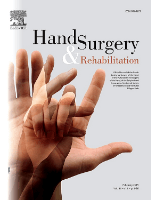
Hand Surgery & Rehabilitation
Connecting Clinicians with Cutting-edge ResearchHand Surgery & Rehabilitation, published by ELSEVIER, is a vital resource for researchers, clinicians, and students engaged in the fields of orthopedics, rehabilitation, and surgery. With an ISSN of 2468-1229 and an E-ISSN of 2468-1210, this journal has established a prominent presence since its inception in 2016, with a convergence period extending until 2024. It holds a commendable ranking in the Q2 category within Rehabilitation and Surgery, as well as a Q3 classification in Orthopedics and Sports Medicine for the year 2023. With a Scopus Rank of #290/551 in Surgery and #86/161 in Rehabilitation, it exemplifies the ongoing pursuit of excellence in its domain. As an open access journal, it provides a platform for sharing significant research findings and advancements in hand surgery and rehabilitation, thereby contributing to the enhancement of clinical practice and patient outcomes. Engaging with this journal places professionals at the forefront of the latest developments in these critical areas of medicine, promoting interdisciplinary collaboration and fostering innovation.
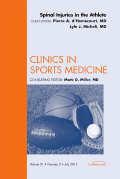
CLINICS IN SPORTS MEDICINE
Advancing the Future of Sports MedicineClinics in Sports Medicine, published by W B Saunders Co-Elsevier Inc, is a leading academic journal dedicated to the dynamic field of sports medicine, offering innovative research and insights critical for clinicians, researchers, and therapists alike. With a solid foundation established since 1982 and an impressive scope extending through 2024, this journal plays a vital role in disseminating knowledge, fostering advancements in orthopedics, sports therapy, and rehabilitation. Its commendable rankings—including Q1 in Physical Therapy, Sports Therapy and Rehabilitation, and Q2 in Orthopedics and Sports Medicine—reflect its significance in shaping contemporary practices and research directions. Though not an Open Access journal, it provides valuable contributions to the medical community, facilitating an in-depth understanding of sports-related injuries, treatments, and rehabilitation strategies. Subscribing to Clinics in Sports Medicine is essential for those seeking to enhance their expertise and stay updated with the evolving landscape of sports medicine.
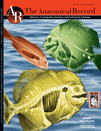
Anatomical Record-Advances in Integrative Anatomy and Evolutionary Biology
Illuminating the Path of Integrative Anatomical Research.Anatomical Record-Advances in Integrative Anatomy and Evolutionary Biology, an esteemed journal published by WILEY, serves as a pivotal platform for scholars in the fields of anatomy, biotechnology, ecology, evolutionary biology, and histology. With an ISSN of 1932-8486 and an E-ISSN of 1932-8494, this journal has demonstrated its academic rigor by maintaining a Q2 ranking across multiple relevant categories, including Anatomy and Biotechnology, and consistently achieving a high Scopus ranking in its respective fields. Its scope, covering integrative approaches to anatomical research and evolutionary studies, fosters interdisciplinary collaboration and innovation. Researchers and practitioners can access the journal through various open-access options, ensuring that groundbreaking findings are disseminated widely. As a vital resource for advancing knowledge and exploring emerging trends, this journal greatly contributes to the understanding of biological systems and evolutionary processes, making it an essential read for those dedicated to pushing the boundaries of their respective disciplines.
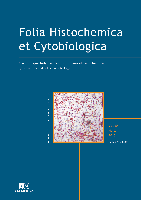
FOLIA HISTOCHEMICA ET CYTOBIOLOGICA
Unlocking Cellular Mysteries for a Healthier TomorrowFOLIA HISTOCHEMICA ET CYTOBIOLOGICA, an esteemed journal published by VIA MEDICA, serves as a vital platform for researchers and professionals in the fields of histology, pathology, and cytobiology. With an ISSN of 0239-8508 and E-ISSN of 1897-5631, this Open Access journal has been disseminating significant findings since 1984, offering free access to a broad audience of scientists and academics. Based in Poland, this journal focuses on critical advancements in the study of cellular structures and functions, contributing substantially to the understanding of various diseases and biological processes. The journal currently holds a respectable impact factor, ranking in the Q3 category for Histology and miscellaneous Medicine, and Q2 for Pathology and Forensic Medicine as per the 2023 metrics. With its commitment to quality research and an inclusive publishing approach, FOLIA HISTOCHEMICA ET CYTOBIOLOGICA is poised to continue influencing its fields significantly through 2024 and beyond.
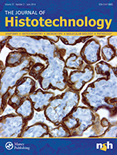
JOURNAL OF HISTOTECHNOLOGY
Catalyzing knowledge in the dynamic field of histotechnology.JOURNAL OF HISTOTECHNOLOGY, published by Taylor & Francis Ltd, is a leading academic journal dedicated to advancing the field of histotechnology, which plays a crucial role in both clinical and research settings. With an established history since 1977, this journal serves as a critical platform for researchers, professionals, and students engaged in the intricate study of tissue processing, staining techniques, and microscopic analysis. It is currently indexed in reputable databases, reflecting its commitment to scientific rigor, with a notable presence in categories such as Anatomy, Histology, and Medical Laboratory Technology. Despite its open access status being limited, the Journal of Histotechnology maintains a respectable impact factor and ranks within the third quartile for Anatomy and Medical Laboratory Technology, and fourth quartile for Histology in 2023, emphasizing its relevance in the scholarly community. As the field continues to evolve, this journal aims to foster innovation and dissemination of knowledge within histotechnology, making it an essential resource for those looking to further their expertise and contribute to the advancements in this vital area of health sciences.